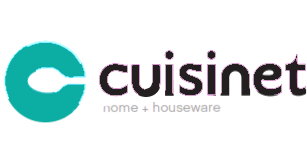Exploring the Benefits of Wood and Plastic Cutting Boards
A cutting board is an essential tool in every kitchen, providing a stable surface for food preparation and protecting your countertops. Two popular materials for cutting boards are wood and plastic, each offering unique advantages. In this article, we will delve into the differences between wood and plastic cutting boards and provide insights on choosing the right size and when to opt for a cutting board with a handle.
-
Wood Cutting Boards
Wood cutting boards have been used for centuries and remain a preferred choice for many chefs. Here are some benefits of using wood cutting boards:
a) Natural Antibacterial Properties:
Certain types of wood, such as maple or bamboo, have natural antibacterial properties that can help inhibit the growth of bacteria. This makes wood cutting boards a hygienic choice for food preparation.
b) Knife-Friendly Surface:
Wood is a forgiving material that helps protect the sharpness of your knives. The natural give of wood fibers reduces the likelihood of your knives becoming dull quickly.
c) Aesthetically Pleasing:
Wood cutting boards add a touch of elegance and warmth to your kitchen. They are available in various grains and finishes, allowing you to choose one that complements your kitchen decor.
-
Plastic Cutting Boards
Plastic cutting boards have gained popularity due to their affordability and practicality. Consider the following benefits of using plastic cutting boards:
a) Ease of Maintenance:
Plastic cutting boards are dishwasher-safe, making them convenient to clean. They are also less prone to absorbing odors and stains compared to wood cutting boards.
b) Lightweight and Portable:
Plastic cutting boards are lightweight, making them easy to maneuver and transport. They are ideal for outdoor picnics, camping trips, or any situation that requires portability.
c) Color Coding:
Plastic cutting boards are often available in different colors, allowing you to designate specific boards for different types of food. This practice helps prevent cross-contamination and promotes food safety.
Choosing the Right Size
When it comes to cutting boards, size matters. Here are some considerations when choosing the right size for your needs:
a) Large Boards:
A large cutting board provides ample space for chopping, slicing, and dicing various ingredients simultaneously. It is ideal for those who frequently cook or prepare meals in larger quantities.
b) Medium Boards:
A medium-sized cutting board strikes a balance between space and portability. It offers enough room for most food preparation tasks and can easily be moved around the kitchen.
c) Small Boards:
Small cutting boards are perfect for quick tasks such as slicing a single fruit or vegetable or chopping a handful of herbs. They are also suitable for limited countertop space or for use as a serving board.
When to Choose a Cutting Board with a Handle
Cutting boards with handles offer added convenience and functionality. Here are some instances when choosing a cutting board with a handle can be beneficial:
a) Easy Transportation:
If you frequently move your cutting board from the countertop to the stovetop or dining table, a handle makes it easier to carry the board securely without risk of dropping or spilling its contents.
b) Hanging Storage:
Cutting boards with handles can be hung on hooks, saving valuable counter or cabinet space. This storage method keeps the boards readily accessible while maintaining a clutter-free kitchen.
c) Enhanced Stability:
Handles can provide an additional grip point, improving stability during food preparation. This is particularly useful when cutting larger or heavier ingredients that require more control.
Choosing the right cutting board is essential for efficient and safe food preparation. Wood cutting boards offer natural antibacterial properties and are gentle on knives, while plastic cutting boards are easy to maintain and portable. Consider the size of the cutting board based on your needs, and opt for a handle if you require added convenience


